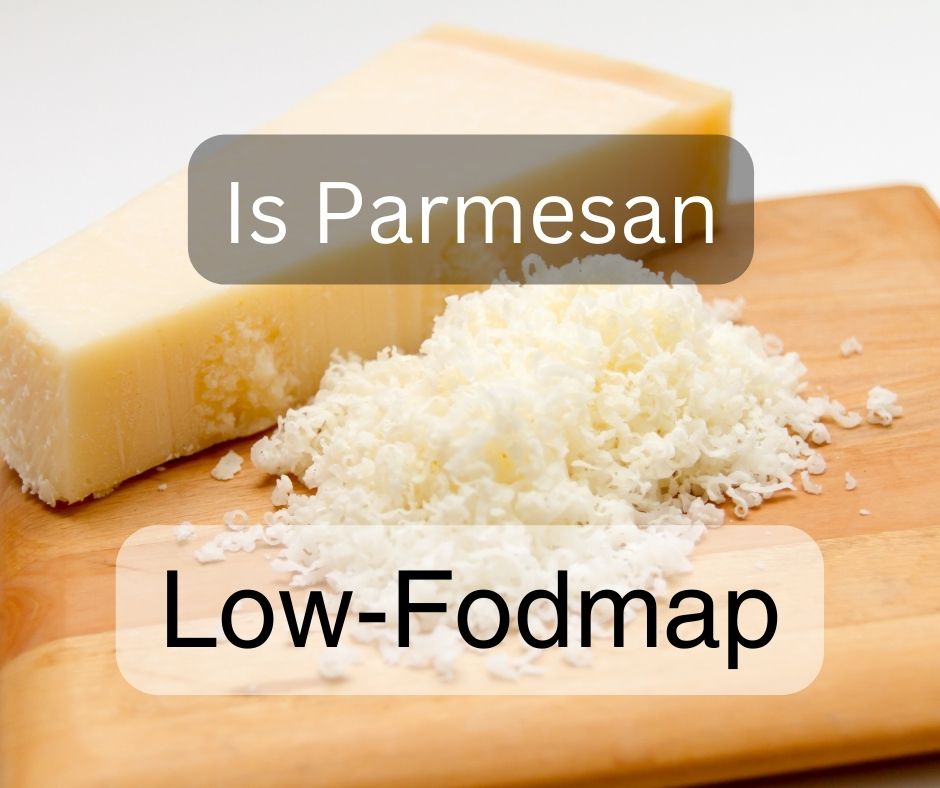Last Updated on January 17, 2024 by Aaron
FODMAPs are a group of fermentable carbohydrates that can cause digestive discomfort in some people, particularly those with irritable bowel syndrome (IBS).
The primary concern with dairy products and the FODMAP diet is lactose. Lactose is a disaccharide sugar found in milk and milk-derived products and is one of the FODMAPs (specifically, the “D” in FODMAP stands for “Disaccharides”). Some people have difficulty digesting lactose, which can result in gastrointestinal symptoms.
Parmesan cheese undergoes an extensive aging process, which is usually 10 to 12 months minimum. This aging process significantly reduces its lactose content. The bacteria used in the cheese-making process feed on the lactose, converting it into lactic acid. Over time, most of the lactose is consumed, leaving aged Parmesan with very low lactose levels.
This tends to make Parmesan cheese relatively low FODMAP compared to soft cheeses or fresh cheeses.
A study titled “Lactose Residual Content in PDO Cheeses: Novel Inclusions for Consumers with Lactose Intolerance” tested the lactose content in four samples of Italian PDO parmesan (Parmigiano Reggiano) aged for 12 months. The results indicated that all samples had a lactose content of less than 10 mg/kg, which translates to less than 0.001 grams per 100 grams. This extremely low lactose content which could be defined as NLF (Naturally Lactose Free) cheese, suggests that Parmigiano Reggiano is potentially suitable for individuals following a low-FODMAP diet, especially those with lactose intolerance.
Another study (1) showed that Parmigiano Reggiano (including both Parmigiano Reggiano and Grana Padano variants) out of 16 block/grated samples contains undetectably low levels of lactose and galactose.
Monash FODMAP: Parmesan

The Monash University FODMAP app is one of the most authoritative sources on FODMAP content in foods.
According to the Monash FODMAP app, both Parmesan and Parmigiano-Reggiano are low in FODMAPs in a serving size of up to 40 grams, and they remain low in FODMAPs even in much larger serving sizes (up to 500 grams). This makes it a versatile choice for those following a low FODMAP diet.
Like many foods on the low FODMAP diet, the portion size can determine whether something is “low” or “high” FODMAP.
When you just sprinkle Parmesan cheese on pasta, the amount is usually quite small. A light sprinkle might be anywhere from 5 to 10 grams, or even less. This is a rough estimate, and the actual amount can vary based on personal preferences and how generously one sprinkles the cheese.
How about Grated Parmesan?
Pre-packaged grated Parmesan, especially from larger commercial brands like Kraft (2), might contain additives or anti-caking agents. These can potentially contain FODMAPs or other ingredients that some individuals may be sensitive to. Common additives include cellulose or potato starch, which are used to prevent the cheese from clumping.
It’s always a good idea to read labels and opt for products with the fewest added ingredients. Buying Parmesan in a block and grating it yourself might be a better option for those strictly adhering to a low FODMAP diet.
Notably, some commercial grated Parmesan cheeses might not be aged as long or could be mixed with other less-aged cheeses. This could potentially mean they have a slightly higher lactose content, though it would likely still be relatively low.

